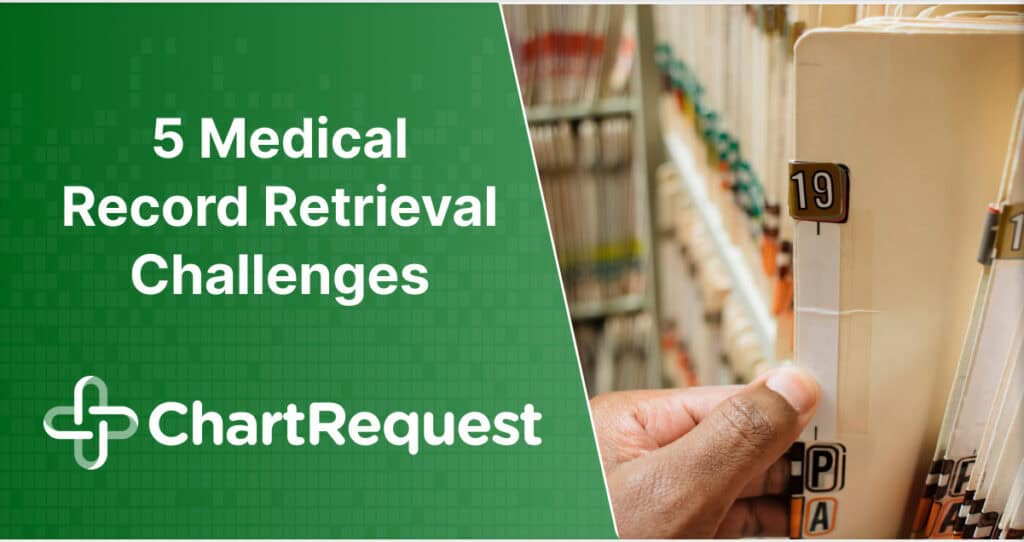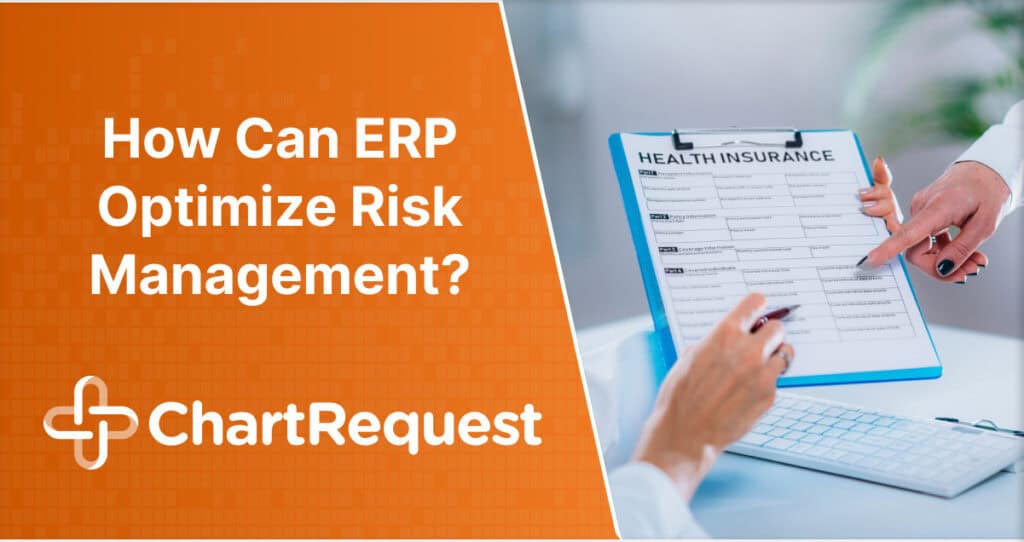Clinical audits help healthcare providers offer the highest quality of care possible. Think of it as a check-up for hospital procedures and treatments. It’s necessary because it helps healthcare professionals assess if they’re on the right track and where they can improve.
Just as we sometimes need a nudge to stay on our life goals, healthcare services need clinical audits to provide top-notch care.
Sometimes during clinical audits, however, your team will need to work through a major spike in request volume. That’s where ChartRequest swings into action!
As the #1 electronic Release of Information (ROI) platform, we help healthcare organizations across the country compliantly keep up with record requests. In this article, let’s explore the significance of clinical audits and how ChartRequest can streamline the process for healthcare providers.
What is the Meaning of a Clinical Audit?
Ever wondered how hospitals make sure the treatment they give patients is top-notch and up to the mark? It’s through thorough clinical audits.
Now, you might be wondering, “What is a clinical audit?”
In simple words, a clinical audit is like a report card for healthcare providers. It checks if the healthcare services are being delivered according to the established standards of care and helps providers identify where improvements can be made.
Think of a clinical audit as quality control for patient care.
The Purpose and Objectives of a Clinical Audit
Clinical audits are not about pointing fingers, but rather about identifying ways to enhance patient care and safety. Quality Improvement is the main goal.
Here’s what clinical audits achieve:
- Benchmarking: It helps in comparing current practices against a set standard.
- Identifying gaps: Clinical audits highlight areas where the actual healthcare service deviates from the expected standards.
- Enhancing patient safety: Hospitals can minimize errors and boost patient safety by regularly reviewing practices.
- Empowering healthcare professionals: It equips staff with information on best practices and encourages continuous learning.
According to a study, clinical audits and feedback have been directly linked to significant improvements in clinical practice. Outcomes show a 4.3% increase in improvement in professional practices. That’s a big leap towards better patient care, especially when the baseline adherence to recommended practice is low!
Clinical audits ensure that the patient care provided is based on evidence and meets specific quality and safety standards. By continuously assessing the effectiveness of healthcare interventions, clinical audits lay the groundwork for a robust healthcare system that is not just reactive but proactive in enhancing patient outcomes.
Plus, they foster an environment of transparency and accountability, making sure everyone, from surgeons to front office employees, is on their A-game.
5 Types of Clinical Audits
Understanding the different types of clinical audits can feel a bit like sorting through a mixed bag of goodies—you know each one benefits patient care, but it’s not always clear how they differ or where they fit in the grand scheme of things. Don’t worry, we’re here to break it down for you, keeping it simple and straight to the point.
1. National Clinical Audits
First up, we have National Clinical Audits. Think of these as big-picture audits conducted across the country that focus on wide-reaching issues within healthcare systems.
The goal? To compare how hospitals or practices measure up against nationwide standards. It’s like having a national leaderboard, showing where improvements are needed and where healthcare providers excel.
These audits are essential because they tackle broad issues impacting patient care across the country.
2. Local Clinical Audits
On the other side of the spectrum are Local Clinical Audits.
These are the home games, focusing on specific healthcare providers or hospitals. It’s about looking inward, seeing how well a team is doing and finding ways to improve right at home.
This type of clinical audit is great for making quick, targeted changes that can significantly impact patients’ experience and outcomes.
3. Ad hoc Audits
Now, meet the Ad Hoc Audits — the pop quizzes of the clinical audit world.
They’re unexpected, covering a wide range of topics, and they can be initiated whenever there’s a specific concern or question about patient care practices. These audits provide rapid insight into issues that may need immediate attention or deeper investigation.
4. Condition-Specific Audits
Moving on to Condition-Specific Audits.
These audits zoom in on the care and outcomes of patients with particular conditions, such as diabetes or heart disease. It’s like putting a microscope on how well healthcare providers are managing and treating these specific conditions based on the latest research and guidelines.
5. Process vs. Outcome Audits
Process audits focus on how healthcare is provided. Think of it as examining the recipe and cooking methods behind your healthcare.
On the other hand, Outcome audits look at the end results of care, like checking how tasty the meal turned out.
Both are crucial — one ensures that healthcare practices are up to the standards, while the other checks if those practices lead to better patient outcomes. Understanding these different types of clinical audits is key to appreciating how healthcare systems continuously strive to improve care and patient outcomes.
Whether it’s a sweeping change following a national audit or a targeted tweak from a local one, every clinical audit plays a role in ensuring healthcare services are as good as possible. And remember, the goal of better patient care is at the heart of each audit — big or small.
Industries That Benefit from Clinical Audits
Clinical audits aren’t just about keeping healthcare providers on their toes; they’re also about ensuring industries related to healthcare stay sharp and up-to-par.
In this section, we’re going to break down how clinical audits play a crucial role in various sectors, ensuring standards are met and, ultimately, that we’re all a bit healthier and safer.
1. The Medical Industry
Clinical audits are like guardians ensuring that every procedure and practice in the medical field is not just done but done right. They focus on Healthcare Compliance and Good Clinical Practice, making sure that patients receive the best possible care. It’s all about improving outcomes and ensuring professionals follow the latest guidelines.
2. Aged Care
Clinical audits are vital for the aged care sector in maintaining a high quality of life for our elders. They help ensure that facilities are safe and clean and that the care provided meets the specific needs of older adults, promoting dignity and respect.
3. Disability Services
Disability services benefit from clinical audits by ensuring that facilities and care programs meet the unique needs of individuals with disabilities. It’s all about making sure care is personalized and empowering.
4. Pharmaceutical and Medical Device Industry
Clinical audits scrutinize everything from drug safety to the efficacy of new medical devices. According to the FDA, regulatory compliance significantly improves when companies regularly undergo audits. This leads to safer, more effective innovations reaching the market faster.
5. Training/Education
Clinical audits help educational institutions prepare future healthcare professionals. They ensure the curriculum is up-to-date with current practices and standards, ensuring the next generation of caretakers is ready for the challenges ahead.
6. Food Safety
In food safety, clinical audits ensure that what we eat is not just delicious but also won’t make us sick. By adhering to Food Safety Standards, producers can avoid recalls and health scares, ensuring the public’s confidence in their products remains high.
A clinical audit acts as a compass for each of these industries, guiding them toward excellence and compliance. By focusing on areas for improvement, these audits help ensure that standards are not just met but exceeded, keeping us all a bit healthier and safer.
How to Prepare for a Clinical Audit in 4 Steps
Preparing for a clinical audit might sound like something straight out of a medical drama, but it’s actually very manageable if you break it down into smaller steps. Think of it as crafting your own recipe for success in healthcare quality!
Here’s a step-by-step guide that may help you build an effective audit plan:
1. Define the Scope and Objectives
Start by pinpointing specific areas of practice that may benefit from closer examination. This could be based on known issues, patient feedback, or areas where standards are not being consistently met.
Next, clearly define what you aim to achieve with the audit. Objectives should be specific, measurable, achievable, relevant, and time-bound (SMART).
2. Assemble an Audit Team
Form a multidisciplinary team that includes members with relevant clinical expertise, audit experience, and data analysis skills. You should ensure the team has a clear leader and defined roles for each member.
3. Develop Audit Criteria and Standards
These are evidence-based practices that should be happening. Develop these based on guidelines, research literature, and expert consensus. Next, determine the expected level of compliance for each criterion (e.g., 95% of patients should receive treatment X within Y hours of diagnosis).
4. Design the Audit Methodology
Decide on the method for collecting information. This might involve reviewing patient Protected Health Information (PHI), observing clinical practices, or using questionnaires. Ensure the sample size is adequate to provide statistically significant results and represents the diversity of cases or conditions being audited.
Pro tip: Release of Information (ROI) solutions like ChartRequest can help you release records faster!
5. Data Collection
Train team members on data collection methods to ensure consistency and accuracy and collect data systematically, respecting patient confidentiality and data protection laws.
6. Analyze Data and Compare Against Standards
Analyze the collected data to assess performance against the predefined standards.
Identify any gaps or areas where practice does not meet the expected standards.
7. Implement Changes
Develop and implement an action plan to address deficiencies based on the audit findings. This may involve revising protocols, providing staff training, or making changes to clinical practice.
Additional Tips
Preparing for a clinical audit involves detailed planning, teamwork, and a dedication to quality improvement. These steps enable healthcare organizations to conduct audits effectively, enhancing patient care, improving outcomes, and meeting regulatory standards.
Engagement and Communication: Engage stakeholders early. Talk to staff and patients to be audited if relevant. Clear communication on the purpose, process, and expectations of a clinical audit can help ease concerns and cultivate a culture of improvement.
Utilize Resources: Professional bodies and healthcare institutions provide audit guidelines and tools. Using these resources streamlines the process.
Training: Conduct training or workshops on audit processes and methodologies for less experienced team members.
Clinical Audit vs. Clinical Research
Clinical audits and research are two key practices that make the healthcare industry better. While they might sound complicated, they’re actually straightforward once you break them down.
Let’s dig in and see how they compare.
What’s the difference?
Clinical Audit: A clinical audit is akin to a health assessment for healthcare services. It involves questioning if procedures are optimal and how they can be enhanced.
By evaluating existing practices against specific standards, a clinical audit aims to enhance patient care. The fascinating aspect? It’s an ongoing cycle of enhancement—audit, modification, re-audit.
Clinical Research: Now, research is the detective work that asks the big questions like, “Is there a better treatment out there?” or “What causes this condition?”
Clinical research tests hypotheses and theories, aiming to develop new knowledge or innovations in healthcare that can lead to better treatments or understanding of diseases.
When to use what?
Use a clinical audit when you want to improve current practices or ensure compliance with standards. It’s all about making sure that what’s supposed to happen actually happens.
Conduct clinical research when you’re looking to answer questions that haven’t been answered yet. It’s about exploring new territory and bringing new treatments, technologies, and knowledge to the table.
Armed with this knowledge, you can appreciate the hard work that goes behind the scenes to make healthcare better. Whether it’s through a clinical audit or groundbreaking research, it’s all about taking steps forward to ensure you and your loved ones receive the best possible care.
Who Performs a Clinical Audit?
When we start talking about a clinical audit, it’s like unraveling a big mystery in the healthcare world. Who are the detectives in this scenario? Well, it breaks down into a couple of key players.
Who’s on the Audit Team?
Your audit team should be a group of healthcare professionals who come together with one mission: to ensure that patient care is as good as possible. This team might include:
- Doctors: They know the ins and outs of patient care.
- Nurses: The frontline heroes who have their ears to the ground.
- Administrators: The ones who keep the wheels turning smoothly.
- Quality Assurance Specialists: The eagle-eyed individuals who ensure everything meets the standards.
This team works together, using their unique skills to check if the healthcare services meet the expected high standards. It’s like having a recipe tested by master chefs to ensure it’s delicious every time.
External Auditors
Sometimes, even superheroes need a little help. Enter, the external auditors. These are professionals who aren’t part of the day-to-day operations of the healthcare facility but bring a fresh pair of eyes to the audit process.
Engaging with external auditors has its benefits. They can help validate the findings of an internal audit and ensure impartiality. They’re like the special guests on a TV show that everyone looks forward to.
Situations Calling for External Auditors
- When impartiality is key: Sometimes, you just need someone without ties to the team to take a look.
- Specialized audits: Need an expert in a rare field? An external auditor might just be your go-to.
- Regulatory compliance: If there’s a question of meeting strict regulations, an external voice can add credibility to your findings.
Did you know?
According to AHIMA, coding audits help make sure healthcare providers are accurately compensated for the services rendered while adhering to regulatory standards.
Need an Efficient Medical Record Retrieval Partner for Clinical Audits? Try ChartRequest!
Clinical audits are crucial assessments in the healthcare sector. Just like check-ups help us stay in tip-top shape, clinical audits keep patient care at its best.
It includes collecting data, benchmarking against standards, and refining strategies for continual improvement. And guess what? A huge part of this process hinges on getting hold of the right medical records.
Retrieving medical records at a record-breaking pace is what ChartRequest does best! While you’re out fixing the healthcare world, ChartRequest assists in handling the nitty-gritty of medical record retrieval. And we do it fast, safe, and secure!
Smoothing out the medical record retrieval step, you’ve got more brainpower to focus on the actual auditing of healthcare services. Explore ChartRequest solutions and find out how we can improve your medical record retrieval process!
Want to experience the power of ChartRequest firsthand? Book a free demo today!








